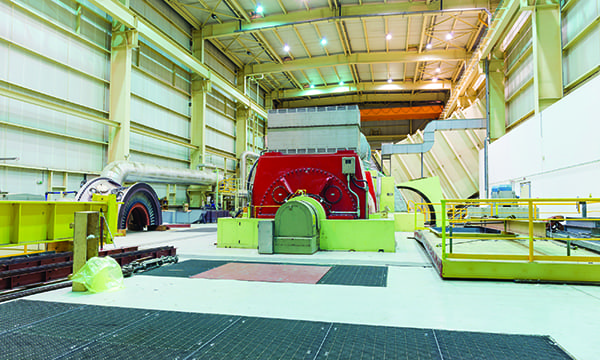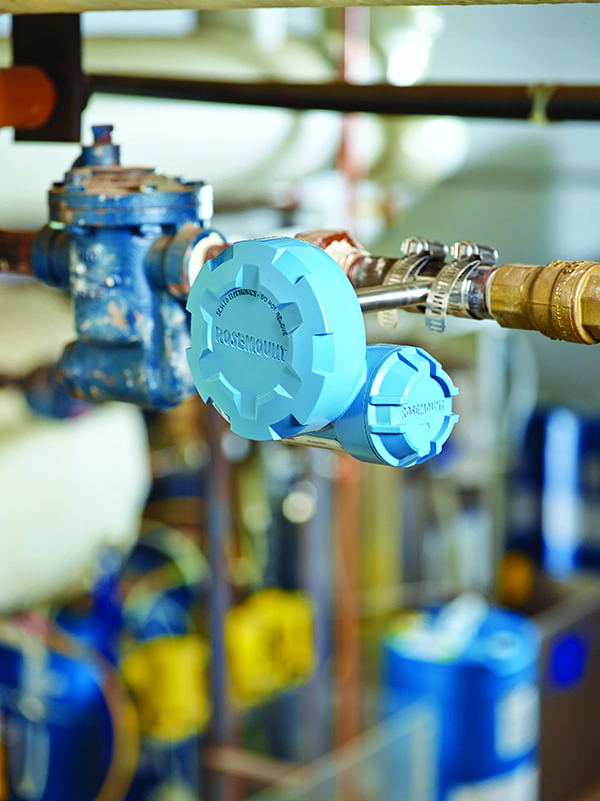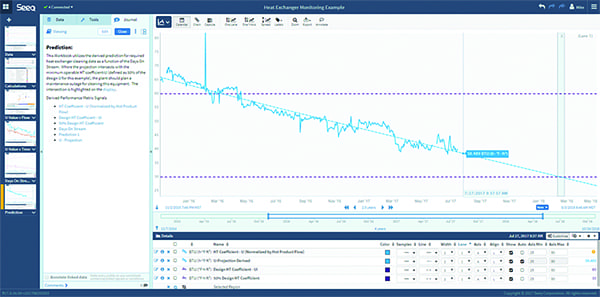Predictive maintenance is preferred over preventive maintenance for critical assets, but the correct application of advanced analytics is required to realize full value.
Power plants of all types have a host of assets requiring maintenance including turbines, pumps, motors, heat exchangers, compressors, steam traps, and more. Moving from preventive to predictive maintenance on the most critical assets can cut costs while improving uptime. This is a two-step process, with the first step classification of assets based on criticality, and the next step implementation of a predictive maintenance program for the most critical assets. Before we look at these two steps in detail, let's first define preventive versus predictive maintenance.
Preventive maintenance is typically scheduled based on operating experience with an asset class, and it's usually time-based, either by calendar or hours of operation. The advantage of this approach is its simplicity and its use of a broad number of assets to define a best practice. The main disadvantage is the lack of precision with respect to the requirements of a specific asset and when it should be serviced. With predictive maintenance, some assets will be serviced too frequently, driving up costs, while other assets won't be serviced often enough, leading to degraded performance in the best case, and unplanned failures in the worst case.
Predictive maintenance is performed based on specific experience with a single asset based on its actual operating data. Typical data points analyzed for predictive maintenance include temperature, pressure, vibration, acoustic, and more. When executed correctly, predictive maintenance enables each asset to be serviced only when needed. This cuts costs for assets that need service less frequently than would be performed with preventive maintenance. More importantly, it enables maintenance to be scheduled for assets that need service before regular preventive maintenance would be scheduled.
Asset Classification
The first step to implementing an optimal maintenance program is to classify assets based on criticality. Compared to predictive maintenance, preventive maintenance is simple and cheap to implement, so it should be used on less-critical assets. Predictive maintenance is relatively more complex and expensive to implement, so it should only be used on more-critical assets.
Defining the degree of criticality of an asset requires consideration of a number of factors. The first is the most obvious: the impact of a failure of an asset on the operation of a larger system. For example, if the main turbine (Figure 1) in a coal-fired power plant fails, the entire output of the turbine-generator set is lost. Turbine failures often result in damage to not only the turbine itself, but also the turbine housing, resulting in high cost and long repair times. Even if the turbine can be repaired fairly quickly, its failure will force shutdown of the steam generator and other associated equipment, which can take hours or even days to restart.
 |
| 1. Too big to (let) fail. Critical assets, such as this natural gas-fired turbine, should be part of a predictive maintenance program to reduce downtime. Courtesy: Seeq Corp. |
A second factor affecting criticality is the mean time to repair an asset. If a plant can run for a few hours with a failed asset, such as a low-horsepower chemical feed pump for a water treatment system, and if the pump can be replaced in one hour, the pump is not critical. This is the case even if the plant can't run for extended periods of time without the pump.
A third factor affecting criticality is the expected cost to repair an asset. Even if an asset is not critical to operation of a power plant, it may be deemed critical if the cost of repair after running to failure is excessive. For example, neither of two large pumps installed in a redundant installation will be critical to operation because only one runs at a time, but the asset may still be deemed critical if the cost to repair it is much more than the cost to maintain it.
Once assets are ranked according to criticality, then the most-critical assets should be moved from a preventive to a predictive maintenance program, which starts with data collection and storage, and then proceeds to data analysis.
Collecting and Storing Data
Each critical asset in a power plant requires instruments to collect the data needed for predictive maintenance. Typically, an asset will have some of the required instruments, but not others. In the past, adding new points of measurement was a very expensive undertaking, but wireless instruments have greatly reduced these costs (Figure 2).
 |
| 2. Flexible additions. Wireless instruments, such as this acoustic steam trap monitor, have dramatically reduced the cost to add a new point of measurement to an asset. Courtesy: Emerson |
Identifying the required points of measurement for each asset is beyond the scope of this article, but most power plants have a good idea of the data required to evaluate an asset. In fact, many critical assets already have the required instrumentation, but managers struggle with analyzing the data supplied by these instruments, a problem examined later in the article.
Once data is collected by instruments, it must be stored. As with data collection, new technologies are rapidly reducing the cost of storing data, both on premises and in the cloud. In many power plants, process historians are already in place to store collected data and to make it available for the analysis required for predictive maintenance.
Applying Analytics
With ever-cheaper data collection, storage, and analytics options, the power industry is moving to an "asset-of-one" model, whether it's a single-asset focus or a pooled approach, whereby each asset is optimized in terms of maintenance.
The pool may inform the single asset–for example, the definition of "normal" may come from the pool of assets and experienced outcomes–but the action and prediction are specific to the single asset. At one extreme are turbines (one), at the other are fields of windmills (pool), with many asset classes somewhere in between (valves, pumps, heat exchangers, steam traps, etcetera).
But in all cases, with single or pooled assets, data analytics is required to create insights. This has been done for decades, often using spreadsheets. A better solution has emerged over the past few years in the form of advanced analytics software. This type of software is designed for creating insights into process data, and its specialized nature makes it simpler to use than a general-purpose tool like a spreadsheet.
For example, Seeq has embedded advanced analytics technologies like big data and machine learning in the visualization experience, enabling engineers and other process experts to work in an interactive application (Figure 3). This provides Google-like search capabilities for locating specific data points of interest, along with tools to cleanse the data. It also provides the ability to work in a web browser, work in real-time with colleagues, do complex calculations, interact with data at the speed of thought, and predict outcomes.
 |
| 3. Maintenance prediction. The Seeq advanced analytics application gives maintenance engineers and other experts the ability to interact directly with the data of interest. Courtesy: Seeq Corp. |
The second part of the advanced analytics equation is sharing insights with colleagues. As with using spreadsheets for analysis, people have been creating reports for decades. Today, with software like Seeq Organizer, engineers and process experts can distribute time-relative analyses to others, and recipients can click on the analysis image and drill down to the underlying data. This analysis can take the form of scatterplots, bar charts, trend views, scorecard elements, and more. This distributed analysis is not a report, which is just a depiction of data. It instead provides links to the data and it's live, eliminating the decoupling of users from data inherent to reports.
But even with the best advanced analytics software, Peter Drucker's quote, "Culture eats strategy for breakfast," is applicable: potential insight gained from using the right software doesn't matter if there is not an analytics culture. Stickiness and effectiveness come from making a data analytics plan, executing it, and then reinforcing and checking it over time. All the traditional change management steps are required to move to the required level of analytics-based decision-making and implement predictive maintenance.
Analytics in Action
One end-user has created a model with Seeq where managers can identify declining performance in an asset, and weigh this decrease in asset performance against the market value of the product to decide when to perform maintenance. This takes the idea of preventive maintenance to another level: rather than optimize for a process parameter or other metric, this end-user is making real-time profitability the priority outcome, in effect the setpoint for a control loop. This type of asset optimization is applicable to a wide range of equipment.
In a more specific case, power plant operators were aware their feedwater heaters tended to foul and lose efficiency in a predictable manner, but due to insufficient instrumentation they were never successful in their efforts to quantify the process so maintenance could be optimized. In this case, the required instruments were added, along with corresponding data collection and storage. Seeq analysis of the data regarding the boiler's heat rate provided the information necessary to determine what effect a cleaning effort had on efficiency to the extent of determining its specific value. Operators now optimize cleaning frequency based on the cost/benefit relationship.
That's where the leading companies are going: not to the asset or line level, but at the outcome level of increased return on investment (ROI). This can mean delaying predictive maintenance that is known to be required to continue production that will be profitable over the coming weeks or months. In other cases, it can mean taking the asset off-line right away to perform repairs. It all depends on the ROI analysis, driven by advanced analytics software.
Predictive maintenance has many advantages over preventive maintenance, but in the past, it was often too expensive to implement this strategy on all but the most-critical assets. With the advent of new technologies, data collection, storage, and analysis are now much less expensive and complex, allowing additional assets to become part of a plant's predictive maintenance program. ■
–Michael Risse is a vice president at Seeq Corp.
